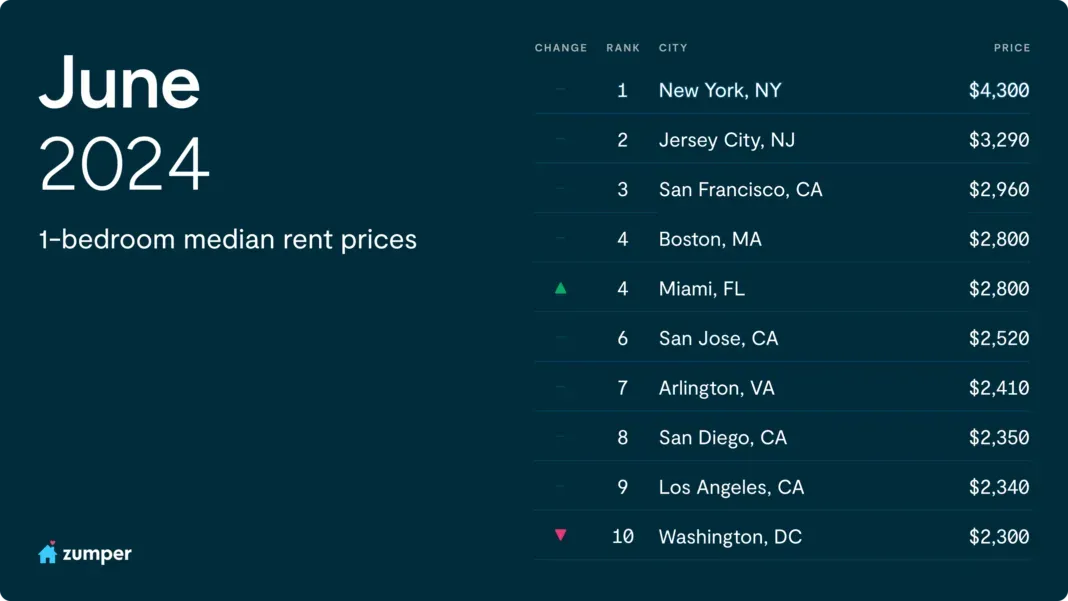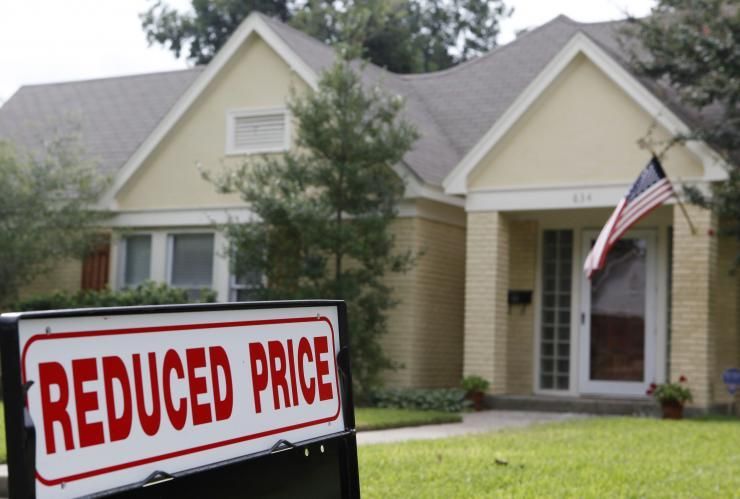LATEST NEWS

Tax nerds may be able to spout off Internal Revenue Code Sections, but most people never get beyond 401(k). (That’s right, your workplace retirement savings plan is named after a section of the tax code.) Still, “Section 1031″ is slowly making its way into daily conversation, bandied about by realtors, title companies, investors and soccer moms. Some people even insist on making it into a verb, a la FedEx , as in: “Let’s 1031 that building for another.” (While Section 1031 isn’t restricted to real estate, that’s clearly where most of the discussion takes place.) So what is 1031? Broadly stated, a 1031 exchange (also called a like-kind exchange or a Starker) is a swap of one business or investment asset for another. Although most swaps are taxable as sales , if you come within 1031, you’ll either have no tax or limited tax due at the time of the exchange. In effect, you can change the form of your investment without (as the IRS sees it) cashing out or recognizing a capital gain. That allows your investment to continue to grow tax deferred. There’s no limit on how many times or how frequently you can do a 1031. You can roll over the gain from one piece of investment real estate to another to another and another. Although you may have a profit on each swap, you avoid tax until you actually sell for cash many years later. Then you’ll hopefully pay only one tax, and that at a long-term capital gain rate (currently 15%). Warning: Special rules apply when depreciable property is exchanged in a 1031. It can trigger gain known as “depreciation recapture” that is taxed as ordinary income. In general, if you swap one building for another building, or one machine for another machine, you can avoid this recapture. But if you exchange improved land with a building for unimproved land without a building, the depreciation you’ve previously claimed on the building will be recaptured as ordinary income. Such complications are why you need professional help when you’re doing a 1031. Still, if you’re considering a 1031–or just curious–here are 10 things you should know. 1. A 1031 isn’t for personal use. The provision is only for investment and business property, so you can’t swap your primary residence for another home. There are ways you can use a 1031 for swapping vacation homes, but this loophole is much narrower than it used to be. For more details, see No. 10. 2. But some personal property qualifies. Most 1031 exchanges are of real estate. However, some exchanges of personal property (say a painting) can qualify. Note, however, that exchanges of corporate stock or partnership interests don’t qualify. On the other hand, interests as a tenant in common (sometimes called TICs) in real estate do. 3. “Like-kind” is broad. Most exchanges must merely be of “like-kind”–an enigmatic phrase that doesn’t mean what you think it means. You can exchange an apartment building for raw land, or a ranch for a strip mall. The rules are surprisingly liberal. You can even exchange one business for another. But again, there are traps for the unwary. 4. You can do a “delayed” exchange. Classically, an exchange involves a simple swap of one property for another between two people. But the odds of finding someone with the exact property you want who wants the exact property you have are slim. For that reason the vast majority of exchanges are delayed, three party, or Starker exchanges (named for the first tax case that allowed them). In a delayed exchange, you need a middleman who holds the cash after you “sell” your property and uses it to “buy” the replacement property for you. This three party exchange is treated as a swap. 5. You must designate replacement property. There are two key timing rules you must observe in a delayed exchange. The first relates to the designation of replacement property. Once the sale of your property occurs, the intermediary will receive the cash. You can’t receive the cash or it will spoil the 1031 treatment. Also, within 45 days of the sale of your property you must designate replacement property in writing to the intermediary, specifying the property you want to acquire. 6. You can designate multiple replacement properties. There’s long been debate about how many properties you can designate and what conditions you can impose. The IRS says you can designate three properties as the designated replacement property so long as you eventually close on one of them. Alternatively, you can designate more properties if you come within certain valuation tests. For example, you can designate an unlimited number of potential replacement properties as long as the fair market value of the replacement properties does not exceed 200% of the aggregate fair market value of all the exchanged properties. 7. You must close within six months. The second timing rule in a delayed exchange relates to closing. You must close on the new property within 180 days of the sale of the old. Note that the two time periods run concurrently. That means you start counting when the sale of your property closes. If you designate replacement property exactly 45 days later, you’ll have 135 days left to close on the replacement property. 8. If you receive cash, it’s taxed. You may have cash left over after the intermediary acquires the replacement property. If so, the intermediary will pay it to you at the end of the 180 days. That cash–known as “boot”–will be taxed as partial sales proceeds from the sale of your property, generally as a capital gain. 9.You must consider mortgages and other debt. One of the main ways people get into trouble with these transactions is failing to consider loans. You must consider mortgage loans or other debt on the property you relinquish, and any debt on the replacement property. If you don’t receive cash back but your liability goes down, that too will be treated as income to you just like cash. Suppose you had a mortgage of $1 million on the old property, but your mortgage on the new property you receive in exchange is only $900,000. You have $100,000 of gain that is also classified as “boot,” and it will be taxed. 10. Using 1031 for a vacation house is tricky. You can sell your primary residence and, combined with your spouse, shield $500,000 in capital gain, so long as you’ve lived there for two years out of the past five. But this break isn’t available for your second or vacation home. You might have heard tales of taxpayers who used a 1031 to swap one vacation home for another, perhaps even for a house where they want to retire. The 1031 delayed any recognition of gain. Later they moved into the new property, made it their primary residence and eventually planned to use the $500,000 capital gain exclusion. In 2004 Congress tightened that loophole. Yes, taxpayers can still turn vacation homes into rental properties and do 1031 exchanges. Example: You stop using your beach house, rent it out for six months or a year and then exchange it for other real estate. If you actually get a tenant and conduct yourself in a businesslike way, you’ve probably converted the house to investment property, which should make your 1031 exchange OK. But if you merely hold it out for rent but never actually have tenants, it’s probably not. The facts will be key, as will the timing. The more time that elapses after you convert the property’s use the better. Although there is no absolute standard, anything less than six months of bona fide rental use is probably not enough. A year would be better. If you want to use the property you swapped for as your new second or even primary home, you can’t move in right away. In 2008 the IRS set forth a safe harbor rule under which it said it would not challenge whether a replacement dwelling qualified as investment property for purposes of a 1031. To meet that safe harbor, in each of the two 12-month periods immediately after the exchange: (1) you must rent the dwelling unit to another person for a fair rental for 14 days or more; and (2) your own personal use of the dwelling unit cannot exceed the greater of 14 days or 10% of the number of days during the 12-month period that the dwelling unit is rented at a fair rental. Moreover, after successfully swapping one vacation/investment property for another, you can’t immediately convert it to your primary home and take advantage of the $500,000 exclusion. Before the law was changed in 2004 an investor might transfer one rental property in a 1031 exchange for another rental property, rent out the new rental property for a period of time, move into the property for a few years and then sell it, taking advantage of exclusion of gain from the sale of a principal residence. Now, if you acquire property in the 1031 exchange and later attempt to sell that property as your principal residence, the exclusion will not apply during the five-year period beginning with the date the property was acquired in the 1031 like-kind exchange. In other words, you’ll have to wait a lot longer to use the primary residence capital gains tax break. Robert W. Wood is a tax lawyer with a nationwide practice . The author of more than 30 books including Taxation of Damage Awards & Settlement Payments (4th Ed., 2009), he can be reached at wood@woodporter.com . This discussion is not intended as legal advice and cannot be relied upon for any purpose without the services of a qualified professional. This article was originally published on January 26, 2010 at Forbes.com . The original article can be found here .
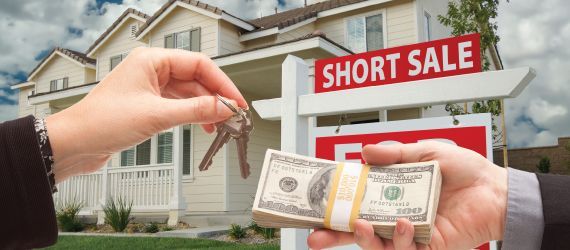
What ever happened to the days when a homeowner who just wanted to sell his home found a willing buyer and, after several negotiations, the home sold? The economy, silly. The real estate market’s tumble into the ashes flooded the market with “distressed properties” – a sweet euphemism for homes that the owners could no longer afford. While the short sale transaction has been around as long as mortgages have, the sheer volume of them during the most recent recession familiarized the average American with the concept. Caught unaware, both lenders and real estate professionals scrambled to find their places in the process, with many becoming overnight experts. Several myths became firmly rooted in our consciousness and scams and cons abounded. Sellers typically agree to short sell a house as a way to avoid foreclosure. This is because they’ve bought into the myth that a foreclosure is worse on their credit than a short sale. In reality, the Fair Isaac Corporation treats a short sale and a foreclosure the same when determining your FICO® score. Buyers, on the other hand, have been inundated with news stories about deeply discounted prices for short sale properties. Some buyers insist on being shown short sales instead of traditionally-listed properties even though buying short sales would not be the right move for them . Lenders love short sales. The homes tend to sell for more than foreclosed homes, and the borrower remains in the home, caring for it, showing it to potential buyers, hiring the real estate agent and, basically, doing the lender’s job. Real estate agents love short sales because they have a better shot at getting the listing than they do if a house is bank-owned. Is it any wonder then, that the myth of a short sale being better for both buyer and seller is so pervasive? If you’ve decided you absolutely must pursue a short sale home, let’s take a look at the basics of buying a short sale . BUYING A SHORT SALE: TAKE IT ONE STEP AT A TIME STEP ONE – THE SHORT SALE REAL ESTATE AGENT The first step to take is to find a knowledgeable real estate agent. Yes, it may be a bit of a challenge, but short sales are quite different than standard purchases, and you need someone experienced and well-versed in the short sale process. Let the newbie agent find someone else to practice on. To find this super agent, ask friends, colleagues and neighbors who they recommend. Look at short sale homes currently on the market and pay close attention to any agent names that pop up repeatedly. STEP TWO – FINANCING Next, put the agent to work finding you a short sale property according to the criteria you have determined works best for you. While he’s doing that, concentrate on getting a loan. Visit lenders to find the best rates and terms. Although short sales are notoriously slow, once your offer is approved by the seller’s lender the pace may pick up, and you want to be ready to close when it does. STEP THREE – DETERMINE MARKET VALUE Never assume that just because a house is listed as a short sale, it’s bargain-priced. When you find a house that you are interested in, have your agent compile a comparative market analysis (CMA) to determine its market value. Often, its value doesn’t match the asking price, so a CMA gives you a basis from which to determine how much to offer on the house. STEP FOUR – THE SAFETY NET Ensure that your agent includes language in the offer that allows you an out under certain circumstances. Some of these include finding another home or a home inspection that turns up needed and costly repairs. Lenders typically won’t negotiate the price because of considerable problems with the house. It’s imperative you are able to walk away from the deal when faced with huge problems with the home. STEP FIVE – CONTINUE YOUR SHORT SALE SEARCH Keep looking at houses. There is absolutely no guarantee that the lender will accept your offer or that the sale will conclude successfully. If you find another home that you like, that is easier to purchase, you may want to walk away from the short sale. It seems as if everyone involved with the short sale, from the homeowner to the listing broker to the lender, wants you to believe that the short sale is the very best bargain opportunity of a homebuyer’s lifetime. The reality may be quite different, depending on region. In Las Vegas , for instance, the prices of short sale houses average $2,500 more than the median price of other homes on the market. Foreclosures are the bargain in Sin City. The lesson here? Don’t buy into the media’s hype. Do your homework and pay close attention to research pertinent to your specific region. Short sales do offer the chance to purchase a home at a discount, but buyers should proceed with caution. It’s a long process, full of pitfalls. Going into it with a savvy agent, and your eyes wide open, puts you a step ahead of the game. This article was originally published on the RealEstate.com site on May 13, 2012. The article can be found here .

TAX ADVANTAGES OF OWNING A SECOND HOME You've probably heard that owning a second home provides some tax relief—and, it can. There are some special tax rules and regulations that apply to second properties, however, and they can be a little confusing. Hang in there, we'll try to make this as clear as possible. To figure out what type of tax breaks you might get as related to your vacation home, you need to know how you'll use the property, and how the Internal Revenue Service will categorize it. Your vacation home will be considered a residence if you use it for personal purposes at least part of the year. If you rent it all year, it's considered to be a rental or investment property. The first rule to remember is that you can't deduct the mortgage interest on your vacation home as home mortgage interest on line 10 of Schedule A if it's not considered to be a residence. Refer to the IRS Web site at www.irs.gov to select and print a copy of Schedule A. MONEY MORSEL Vacation homes come in many packages. Your vacation home could be a house, a condo, a cabin, or a duplex. It also could be a boat or a recreational vehicle. To qualify for a tax deduction, your vacation home needs to have a bathroom, kitchen, and a place to sleep. It's a good idea to pay a visit to your accountant before you buy a vacation home. Ask her about tax advantages for rental properties and residences, and have her run pro forma returns under different scenarios to see how your income tax return may be affected. That doesn't mean, however, that you can't rent a vacation home and still have it be considered a residence. It's all a matter of timing. The IRS says in order to have your vacation home qualify as a residence, you need to spend at least 14 days there, or 10 percent of the amount of time that the property is rented. Let's say that you own a home on a lake, very close to some good ski areas. The location makes your home attractive to skiers and snowmobilers in the winter, and to families and others who enjoy the lake, hiking, and so forth in the summer. There's a big demand for these properties, and you have no trouble renting your home for 210 days out of the year. You might think the rental income is great, but if you don't use the house for at least 21 days, the IRS will consider the home to be a rental property and you won't be able to deduct your mortgage or real estate taxes entirely on Schedule A. Part of the mortgage interest will need to be declared against the rental income on Schedule E of your tax return. Refer to the IRS Web site at www.irs.gov to select and print a copy of Schedule E. On the other hand, if you own a vacation home and rent it for less than two weeks, you get a tax break because you don't need to report the rental income on your tax return. All that rental income is, essentially, tax free. If your property is considered a residence, but you rent it for more than two weeks a year, you'll need to report the rental income. You'll also be able to take advantage of some allowable tax deductions, but since it's a vacation home, you can't have more expenses than income. You can come out to zero, but the IRS doesn't permit you to take a tax loss on a vacation home. The income and deductions offset each other when you rent a vacation home for more than two weeks. Deductions include the following: Mortgage interest Upkeep Maintenance Mortgage insurance Utilities Real estate taxes Insurance Depreciation Supplies and miscellaneous expenses This article was published on familyeducation.com . The original article can be found here .
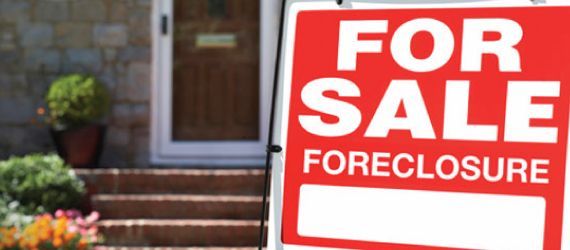
THE SMART WAY TO BUY FORECLOSURES If you’re in the market for a new home, foreclosed properties can be really appealing. It’s easy enough to find a listing in a neighborhood that would otherwise be out of your price range, but don’t be fooled by what looks like a great deal. Buying a foreclosure is something you should seriously evaluate prior to shopping or writing an offer. Check out “The Pros & Cons of Buying a Foreclosure” for more on the specifics. WHAT’S DIFFERENT WHEN BUYING A FORECLOSURE If you’re in the market for a new home, foreclosed properties can be really appealing. It’s easy enough to find a listing in a neighborhood that would otherwise be out of your price range, but don’t be fooled by what looks like a great deal. Buying a foreclosure is something you should seriously evaluate prior to shopping or writing an offer. Check out “The Pros & Cons of Buying a Foreclosure” for more on the specifics. If you’re up for the inherent risks, you’ll want to know how it differs from a normal real estate transaction, what options you have, and where to look. In general, when purchasing a foreclosure expect a very impersonal experience. You’re most likely communicating with the lender or bank that owns the property and for them it’s just a business decision. If the numbers make sense they’ll make the deal, and if not then they won’t. Understand that foreclosure is a process and there are multiple stages during which the homeowner can resolve the delinquency or a potential buyer can make a purchase. At certain stages you can get a better deal while taking on more risk, and in other stages you can absorb less risk but at the sacrifice of a bargain. FACT: Foreclosures come in four primary flavors: Pre-foreclosures or short sale, auction, real estate owned (REO), and government owned. As a group, these are considered “distressed properties.” They are distressed because of both the financial situation of the owner and also the physical condition of the property. It’s critical to understand that distressed properties are often treated poorly by the previous owner; after all, someone was forced to leave their home. Chances are that if the owner wasn’t able to stay current on the bills, they weren’t able to stay current on maintenance or repairs either. Often the owners will feel that the lender is acting in bad faith and will purposely cause damage to the home prior to their eviction. This damage can range from superficial, to the removal of hardware and appliances, and even the intentional damage of structural elements in the home. That’s why it’s critical that you understand the risks you are taking and are willing to endure the as-is nature of the purchase and all of the baggage that entails. UNDERSTAND THE DIFFERENT TYPES OF FORECLOSURE PROPERTIES There are various stages of foreclosure and various types of entities that may be in possession of the property during the transaction. Each of these scenarios has its own caveats, so be conscious of the type of foreclosure you are dealing with and be diligent with any special considerations. TIP: Don’t get caught up in the excitement of bidding. Consider the repairs and set a max price. PRE-FORECLOSURE OR SHORT SALE During pre-foreclosure the homeowner still has control of the property. The case is usually that the owner has stopped being able to make timely payments and likely negotiated with the lender to sell the house below market value, also commonly called a short sale. The owner vacates the property at the time of signing the short sale agreement. You can make an offer to purchase the property, but the lender has to agree with the homeowner to accept less than the outstanding balance on the mortgage loan. This helps the seller avoid foreclosure, and the accompanying credit history blemish, while usually translating into a discount for the buyer below the home’s market value. It also helps the lender control costs by avoiding the foreclosure process. Typically short-sale homes are in better condition than foreclosed properties because the parties have found a solution before a legal foreclosure proceeding begins. The home is still sold in as-is condition, but the buyer may have the right to inspect the property in advance without the right to ask the lender to fix any defects. IMPORTANT: Keep in mind that when the property enters pre-foreclosure, which is somewhat of a grace period, the owner has several months to pay off the default amount. AUCTION SALE Homes don’t always sell during the pre-foreclosure stage. Sometimes the property owner is not willing to remediate, and sometimes the lender is not willing to execute a short sale. In this case the home moves into foreclosure at which point it will be sold at auction. Auctions are typically conducted by a neutral third party such as a trustee or sheriff. It’s important to note that during this phase the lender cannot take advantage of the property owner in any way, nor can the lender make a profit at the auction. When the property is sold to the highest bidder, the liens are paid and any overage is given to the homeowner. Though typically, once the loans are paid, there is no money left. Auctions are usually cash only, which tends to limit the field of bidders to investors and other lenders. Some states may allow a good-faith deposit with a short redemption period, but more commonly you need to hand over a cashiers check for the full amount immediately. It’s a good idea to register for a few as an observer to learn the lingo, rules, and nuances of the process. Foreclosed homes are usually winterized to reduce the risk of damage to the property. The plumbing is drained, the hot water is turned off, and the windows may be boarded. In some instances, this as-is condition can limit how much you can inspect the property. When buying an auctioned home it’s common not to have the right to view or inspect the property. IMPORTANT: Be sure to investigate the right of redemption laws in your state, which allow homeowners to reclaim their property within a certain period of time if they pay all past-due amounts and applicable fees. These vary state to state . You will also want to have a clear understanding of any liens or encumbrances on the home. Make sure there are no surprise claims pending against the home that you may have to deal with after the auction. REAL ESTATE OWNED (REO) If the property fails to sell at auction it will move into the full possession of the lender and become real estate owned. REO is the most popular method of buying a foreclosure because it’s generally the easiest and safest way. However, when you purchase a lender-owned property, it can offer the least value and most competition. Understand that the lender acquired the distressed property at the auction because no one bid higher than the default amount. FACT : Now that the lender owns the property it can be sold for any price – even for a profit. Generally lenders want to move this distressed asset off their books immediately and will price to reflect the market value of the property. For the buyer that means that there will likely be little room for negotiation. The benefit here is that the lender is usually obligated to clear any additional liens on the property, including back-taxes, so it’s a much safer investment than an auction. Commonly the lender’s agent will also clear and clean the house for sale. GOVERNMENT OWNED This tends to be a slower process and involves more paperwork than other types of foreclosure transactions. Buying properties from the Federal Housing Administration (FHA), U.S. Department of Veterans Affairs (VA), Small Business Administration (SBA), Fannie Mae, Freddie Mac, Internal Revenue Service (IRS), or others can save you money. Some of these agencies may assist with financing, but the IRS requires full cash payment for the property. IMPORTANT: “As is” condition means that you will accept the property in its present condition; what you see now, and discover later, is what you get. LEARN WHERE TO FIND FORECLOSED HOMES The different types of distressed properties can be found on various sources. There are several consumer focused sites that can be found by conducting simple Google searches for “auction homes” or “foreclosure homes” . The absolute best route to take is to work with an experienced real estate agent that specializes in foreclosure home sales. This is not just because they will have better access to available listings, but also because foreclosure transactions are very different from conventional real estate sales. You will want someone that can guide you through all of the twists and turns. Specialized agents will have a network of contacts from traditional lending institutions, mortgage banks, other real estate agents, and residents living in areas where you hope to buy. Very often real estate agents work directly with banks to handle REO properties. Foreclosure sale ads from the VA and the FHA are posted in newspapers on a regular schedule. Legal notices of default also run in newspapers. You can also check online public records and the county courthouse. This is where all real estate transactions for a property in that county are recorded. WHAT YOU’LL NEED TO DO TO CLOSE The most important thing to understand about closing on a foreclosure is that it’s a non-standard transaction and the lender will have their own processes and requirements. This is primarily a protective measure to shield the bank from any recourse by the buyer. IMPORTANT: For REO’s the bank will want a pre-approval before considering any offers. It’s recommended that you have a professional inspection performed prior to making an offer. The bank won’t allow for any contingencies in the offer, so be sure about your decision. Don’t skimp on the inspection either; it could end up costing you way more in the end if something gets missed. This is where working with a specialized foreclosure agent can come in handy. Often times the agent can get their hands on a recent inspection report, saving you time and money before you decide to move forward. TIP: You can finance your repair costs with an FHA 203(k) renovation loan. It’s also prudent to run a comprehensive title search and report. Because of the uniqueness of the transaction, you’re more likely to discover additional liens on the property during closing. Most lenders will not allow a transaction to close unless all of their requirements are met. The property will be transferred in as-is condition, so the buyer is taking on all of the burdens. There will be no seller disclosure requirements either because, after all, nobody from the bank has ever lived there. Ultimately, buying a foreclosure is a complex process that can result in a true bargain when done right or a terrible decision when approached carelessly. Even professional investors can end up upside down on these transactions. If you’re ready to take the plunge, do your research, speak with a professional, set a budget, prepare for the worst, and take it one step at a time. RESOURCE CENTER & GLOSSARY HUD: Foreclosure process info HUD: Foreclosure listings FHA: 203(k) rehab and renovation loan information KEY TERMS – IN PLAIN ENGLISH As-is – Refers to a transaction where the property is transferred to the buyer in its current state, without any requirements for additional disclosures or any recourse available for the buyer against the seller. Auction – Occuring if a property goes into foreclosure. This is generally administered by a state agency and the bidders are usually required to pay cash at the time of purchase. Delinquency – When a homeowner fails to meet the terms of their mortgage for a prolonged period of time and after several notices. Distressed Property – Properties which are in distressed financial or physical state. Foreclosure – The process by which a lender can repossess a homeowner property in order to repay an outstanding debt. Real Estate Owned – Representing a foreclosed property that did no sell at auction and has returned to the possession of the lender. Short Sale – A real estate transaction that happens before foreclosure occurs, usually with the approval of the lender to liquidate the property for less than the outstanding loan balance. This article was published on homefinder.com . The original can be found here .

While everyone should pay taxes on their property, not everyone does. When they don’t, local municipalities may assess a lien against it, and take the property away from the owner. This is where you, as an investor, comes in. WHAT IS TAX LIEN INVESTING? Tax liens are a way for local governments to enforce property tax laws. These types of investments are most popular in the U.S. and UK, where the tax law allows governments to privatize the collection of taxes on property. The result is an investment opportunity that offers attractive yields in exchange for the payoff of someone else’s tax debt. Investors buy liens at an auction, and then turn to the property owner for repayment. The repayment amount, plus a penalty, constitutes the rate of return for your tax lien investment. Tax lien investing is advantageous as an alternative to the stock market and more traditional real estate investments, but you must understand both the benefits and the drawbacks. ADVANTAGES OF TAX LIEN INVESTING One of the biggest benefits of investing in tax liens is that, if the property is redeemed by the owner, you could earn a very high rate of return. In California, for example, tax lien certificates have a default interest rate of 18 percent. In some states, profits can be as high as 36 percent. The homeowner’s redemption on a tax lien sale will generally run from two to three years. This means that the property owner has two to three years to repay you for the tax debt. If the property owner doesn’t repay the lien, you may foreclose on the property, resulting in an acquisition of property well below the market value. DISADVANTAGES OF TAX LIEN INVESTING One disadvantage of tax lien investing is that properties may not be kept up very well. If a property owner has “given up” on the property, and doesn’t intend to repay, then you may be acquiring a home with little to no value. You will have to rehab the home to sell it. Unless you’re experienced in doing this kind of thing, it can become a losing proposition very quickly. Another disadvantage of investing in tax liens is that they are complex arrangements and not usually suitable for novice investors. Tax liens are sold at auctions. If you’ve never been to an auction before, you’re competing against banks and hedge funds with some of the better properties on the market. The purpose of bidding is to bid down the interest rate on the lien or to bid up the premium, which reduces your net rate of return indirectly. So, while the default rate of return may be 18 percent, it’s unlikely that popular or well-maintained properties will fetch this yield. Some properties may be bid down to .25 or .5 percent, making them attractive only to large financial institutions who can make up the difference in volume. As a lien holder, you have responsibilities you must fulfill. For starters, you must notify the property owner in writing that you have purchased the tax lien. This makes them aware of the fact that you own their tax debt. Tax liens are also not investments that you can collect on forever. Liens generally last no longer than 7 years, but they may only have a repayment period of 2 to 3 years. This means you will have to actively research and buy liens on a semi-frequent basis if you want to keep earning money from them. Finally, tax liens have a bad reputation in other markets because the basis of the profit depends on you collecting a tax debt – taxes being generally unpopular among many people. It has earned tax lien investing the nickname, “vulture investing.” If you don’t feel comfortable collecting a tax debt, you’re not going to like investing in tax liens. OTHER THINGS YOU SHOULD KNOW When you buy tax liens, you should always investigate the title of the underlying property. If you do happen to take possession of it, you will want to know whether there are any other liens outstanding on the property. If there are, it may be impossible to sell it. If the title is clear, you shouldn’t have too much trouble selling, but you pay have to run a quiet title action, because many title insurance companies and homeowner’s insurance companies, won’t touch a tax lien title. Spend the bulk of your time researching properties. The best ones will be in nice neighborhoods, with high property values (comps), and the tax debt will be owed by motivated property owners. The ideal situation is where the property owner fell behind on tax payments because of a divorce or some unusual circumstance, but has access to investments or has a high income potential, which will all but guarantee the redemption of the property. Finally, try to attend auctions that don’t allow online bidding or which aren’t advertised online. Online auctions, or access to the auction, draws large investors who are bid-happy, which drives down the potential rate of return on your investment. This article is from the Alternative Investment Headquarters website . You can find the original article here .
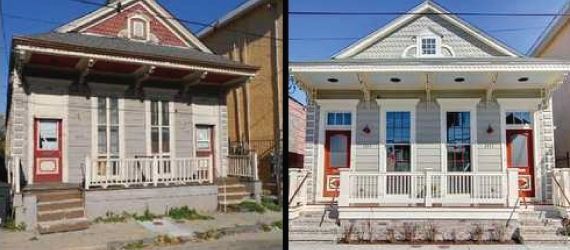
THE ULTIMATE GUIDE TO HOUSE FLIPPING IN ANY MARKET House flipping is a fantastic way to make money, but it is not a way to get rich quick. To make money flipping houses you have to buy houses very cheap, account for all costs, sell houses quickly and find great financing. You may not make a lot of money with your first flip, but as you gain experience and learn the business you can make serious money flipping houses . I flip 10-15 houses a year and I average over $30,000 in profit on each flip. I have nine flips in progress and it has taken me many years to build up my flipping business to handle that many properties at once. HOW CHEAP DO YOU HAVE TO BUY FLIPS TO MAKE A PROFIT? House flipping starts with how much money you pay for the house you intend to flip. Most people under-estimate the costs involved in flipping and that is why they do not make much money or lose money on their first flip. The 70 percent rule is a great guideline to help flippers calculate if they can make a profit on a flip. The 70 percent rule states a house must be bought for 70 percent of the ARV minus the cost of repairs. ARV stands for after repaired value and is what the home will sell for after it is fixed up. For example: ARV: $150,000 Repairs : $25,000 Purchase price for flip: $80,000 ($150,000 x .7 – $25,000 = $80,000) Many people make the mistake of paying too much money for a house they want to flip, because they only consider the repair cost and what they can sell it for. You have to have a lot of room between the purchase price and selling price on flips, because there are so many costs involved. WHAT ARE THE COSTS INVOLVED WHEN FLIPPING HOUSES? The most obvious cost when flipping houses is the repair cost; here is a great article on how much it costs to repair a house . Besides the repair cost, you will have carrying costs, buying costs and selling costs. Buying costs: when you buy a flip you will have to pay closing costs, which can be as much as 3-6 percent of the purchase price if you get a loan. Hard money lenders will charge up to four percent for origination charges; other leaders will charge less but still expect to pay at least one percent. You will have to pay closing fees to the title company, recording fees and possibly an appraisal and inspection. Carrying costs: while you own the property you will have to pay for insurance, taxes, HOA fees, yard maintenance, utilities and interest if you get a loan. Interest rates will range from 5 to 20 percent depending on the lender you use. Selling costs: to sell a house you will have to pay real estate agents, closings fees, title insurance and possibly closing costs for the buyer. Here is what the total costs might look like on a flip bought for $80,000, sold for $150,000 and takes six months to sell: Inspection: $350 Appraisal: $550 Loan costs: $3,000 Closing fees: $500 Yard maintenance: $350 Insurance: $400 Taxes: $500 Utilities: $1,000 Interest: $3,000 Title insurance: $1,000 Real estate agents: $9,000 Closing fees: $500 Total cost: $20,150 The total costs for this flip are $20,150 without any repairs being done. These costs are typical for a flip in Colorado and assume you use a real estate agent . New flippers can expect to pay higher costs for financing and costs also vary widely by state due to tax rates, if an attorney is needed and many more factors. HOW MUCH DOES IT COST TO REPAIR A FIX AND FLIP? Before you buy a fix and flip, you have to determine what the cost will be to repair the home. The repair cost will vary greatly on the amount of work needed, the contractor used and the area you live in. I use contractors to repair all my houses, because it is not worth my time to do the work myself . Finding contractors is tough and one of the hardest parts of my flipping business. I am constantly changing contractors and looking for new people to who will charge a fair amount and work quickly. Here is a great article on how to find a great contractor. When you sell a flip you want to make sure it is in great shape and the buyers can get a loan . All the major systems should work, the home should be updated and look great. I have a much more details article on how to repair a flip here . I usually spend at least $15,000 on my flips and as much as $50,000 depending on what work is needed. HOW MUCH PROFIT IS THEIR IN FLIPPING HOMES? For this hypothetical flip I will assume the repair costs are $15,000, which bring the total costs to $35,000 ( here is a case study on a real flip I did in 2014 ). If you buy the house for $80,000 and have $35,000 on costs, that leaves you a break even point of $115,000. Selling the house for $150,000 would net a profit of $35,000 on the flip if everything goes perfectly. Rarely does everything go perfectly on a flip, because repair costs come in higher, unexpected costs come up and you don’t always sell a house for as much as you plan too. I always add $5,000 into my cost estimates for unexpected repairs or costs that will come up. Even though the initial estimates show a $35,000 profit, in reality the profit would most likely come in at $30,000 or even $25,000. If you are using hard money to finance a fix and flip your costs will be even higher, because the interest and origination fees are higher than my financing. I have a great set up through my portfolio lender , but it is rare to find such a great deal. If you happen to be a real estate agent like I am, your costs may be less than what I estimate. . HOW CAN YOU BUY HOUSES CHEAP ENOUGH TO FLIP? Now that you can see why you have to buy flips so cheap to make a profit, the question is how can you possibly find houses priced so low? I am in Colorado and our market is extremely hot with rising prices and low inventory, but I still buy 90 percent of my flips from the MLS . I am a real estate agent and I have a huge advantage, because I can write offers very quickly, save money on commissions and pay more for flips than other investors. Since I save a commission on the front and back-end of my flips, I save $10,000 in some cases in costs that a non agent would have to pay. That savings allows me to pay more for a fix and flip than an investor who is not an agent can pay and still make a profit. If you couple being able to pay more for flips and the fact I can make offers in an hour after a home is listed, being an agent gets me many more deals. Here are s ome other tips to get a great deal on houses . Find a great real estate agent who will find you deals fast and act fast Be pre-qualified with a lender and ready to make an offer immediately Waive your inspection contingency (only for experienced flippers) Offer cash with a high earnest money deposit Be willing to close in 15 days or less Check auction sites like auction.com for homes that are not listed in MLS Look for for sale by owner homes that may be under priced Start a direct marketing campaign or find a wholesaler in your area Many of these techniques cannot be used by beginners, because you may not have cash or be willing to waive your inspection contingency. That does not mean it is impossible to get a deal that you can flip, but you may have to be more patient. I will go months without seeing a great deal that has enough room to flip. HOW CAN YOU FINANCE FIX AND FLIPS? I use a local portfolio lender to finance my flips; they charge a one percent origination fee and 5.25% interest rate on a one year loan for flipping. The catch is they only finance 75 percent of the purchase price. I have to come up with 25 percent for down payment, money for repairs and all the carrying costs. I can easily have over $50,000 in cash tied up in one flip. There are many ways to put less cash into a flip, but it will cost you higher interest rates and fees in most cases. Hard money lenders will loan more money for flips, but they charge higher rates. Interest can range from 8 to 18 percent and they usually charge from 2 to 5 origination points. The advantage is hard money lenders will loan much higher loan amounts; up to 100 percent of the purchase price and in some cases the repairs as well. To get the entire purchase price financed with hard money you most likely have to be a very experienced investor. Private money is a loan from a private investor. It could be a loan from a friend, family member, business partner or stranger. Private money rates vary depending on the situation; I get some private money from my sister and I pay her a six percent rate. Some private money lenders will charge less and some much more. Here is a great site with more information on how to find private money lenders and structure deals with them. Partnerships are another way to get started flipping with little money. Many flippers get started by doing most the work; finding, repairing and selling a flip, but they have a partner finance everything. A typical deal is the partners split profits 50/50 for one person doing all the work and another providing all the money. Crowd funding has also made its way into the flipping world. The costs are similar to hard money and most crowd funding platforms are looking for experienced investors. HOW LONG DOES IT TAKE TO FLIP A HOUSE? I mentioned earlier in the article it takes six months to flip a house; this seems like a very long time to most beginners, but it takes time to flip. Many investors get into trouble because they think they will complete the flip in three months and base all their costs on three months. It takes time to get a contractor scheduled, get the work done, market a house and sell a house. When you buy a flip most contractors are not able to start right away. The contractor will have other jobs and it may be a couple of weeks before they can start working. The time it takes to complete the work is almost always longer than the contractor says. If he says it will take two weeks, count on the work taking a month. Unless you are having only the basics repaired like paint and carpet, I would expect the work to repair a house to take at least a month and bigger jobs to take two months. After the work is done you have to get the house cleaned and listed for sale. It takes a week or so to get everything ready and the home on the market and then you have to wait for an offer to come in. If I price a home correctly an offer usually comes in around three weeks after I listed the home. If I over price a home it can take six weeks or longer to get an offer . To get the highest price for you flip you will want to sell to an owner occupant. In order to sell to an owner occupant there is a 95 percent chance they will get a loan and that process takes from four to six weeks. Hopefully the appraisal comes in at value and there are no issues that cause the contract to fall apart, because you will have to start the process all over again. Time it takes to flip a house: Schedule a contractor and complete repairs: one to three months List a home and get a contract: one to two months Time it takes for the buyer to close: one to two months Total time: three to seven months This time frame assumes the contractor is fairly quick working, the house is priced right , the buyers get their loan with no problems and there are no other delays. When flipping houses you have to remember that nothing every works out perfectly so plan for delays and plan for a six month turn time. WHAT IS THE BEST WAY TO SELL A FLIP? Many flippers try to sell a house for sale by owner to save money on a real estate agent commission. This is a huge mistake if the house flipper does not know what they are doing. The best way to sell a house is to use a real estate agent, because they will market it better, price it better and get it sold quicker. If you under price a home you will leave money on the table and if you overpriced the home you it will sit on the market and sell for less than if it was priced right. Here is a great article with more information on why you should use an agent. WHAT ARE THE RISKS OF FLIPPING HOUSES? There a lot of risks when you flip houses, but if you do your homework and plan well you should make money. The biggest risk is under estimating the costs of a flip and losing money or even the house, because you are too stubborn to sell for a loss. No matter how nice a house is you cannot sell it for more than market value. If you have had a house for sale with a real estate agent for months and don’t know why it is not selling, you probably over priced it. It is better to sell a home now and make less money that to hope that prices will increase or a special buyer will come along. Flippers fear a market change more than anything because it takes time to flip and a lower market means less profit. If you follow the guidelines like the 70 percent rule you should be able to make money flipping even in a down market. Many flippers went bankrupt during the last housing crisis because they bought mediocre deals assuming they would make money because they market would always go up. When they market went down they did not lower prices and take their losses fast enough and they could not sell the houses . I have flipped houses since 2001 through good and bad markets. If you buy houses cheap enough and sell them fast enough you can make it through the down markets and make a lot of money in the up markets . CONCLUSION House flipping is a lot of work, but is a lot of fun as well . I make a great living flipping houses and it is not even a full-time job for me. I also spend time selling houses as a Realtor , running my real estate team and running this blog. The income from flipping is a great way for me to buy more rental properties , which provide long-term income. Flipping has also taught me how to find great deals for rental properties and how to run my business better. If you want to start flipping houses it is not something you can spend a couple of hours on a week and make $50,000 on in two months. It takes time, hard work and experience to become a successful flipper. For more information on flipping houses check out my book Fix and Flip Your Way to Financial Freedom. The book is $9.99 and available at Amazon as a 171 page eBook here. You can also buy a PDF version of the book in the Invest Four More store . This article was written by Mark Ferguson and published on December 5, 2014 on the InvestFourMore website. Click here for the original article

I really like small multifamily properties, and I talk about them an awful lot. Several months ago, I wrote a post called “How to Make a Million Dollars in Real Estate” which was designed to show the possibilities for building wealth through real estate – and the start of that plan was the purchase of a small multifamily property. I’ve explained many times that the goal isn’t to buy a property that fits exactly the description mentioned, but rather to teach the math behind the method. You could buy a triplex, a few duplexes, lots of single family homes, or whatever. It’s the cash flow that really matters. Since that post came out, I’ve been asked by a number of people how they should buy such a property. So, to help with this, I wrote this post to show you step by step how I managed to buy my newest real estate investment, with almost nothing down and significant monthly cash flow. It’s often easy to get caught up in the “theoretical world” of how real estate investing works – so hopefully this post will give you an idea of how real estate investing can (and does) work in the real world. All the numbers in this are true and accurate, though I sometimes might round slightly for simplicity! This post is quite long, so be sure to fully understand each part before moving on, so you don’t get overwhelmed! If you have any questions at all, please leave a comment below and I’ll do my best to help answer them.
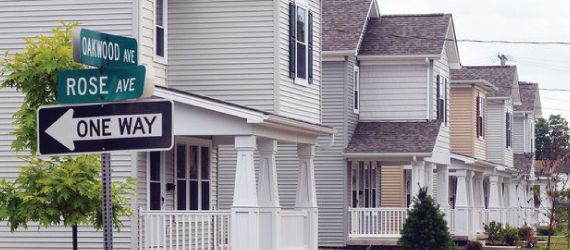
Looking for affordable housing? According to a new study, Syracuse ranks as one of the cheapest places to live in the United States. Real estate website Trulia published its list of most affordable places to live in the U.S. based on housing, commuting and utilities costs, the Huffington Post reports. Syracuse ranks at No. 9 on the list of top 10 cities. Real estate website Trulia published its list of most affordable places to live in the U.S. based on housing, commuting and utilities costs, the Huffington Post reports. Syracuse ranks at No. 9 on the list of top 10 cities. Trulia explains that mortgage payments, property taxes and insurance aren't the only factors considered when measuring housing affordability. For example, some households living in cities with cold winters and hot summers might have larger utility bills (looking at you, Syracuse). Additionally, those living in low-density cities might have to spend more time and gas for transportation. The results were determined by the monthly mortgage payment on a median-priced home, the median amount residents pay for utilities in each city and how much residents spend on commuting. Trulia says 33.1 percent of a middle-class income will be spent on housing, utilities and commuting in Syracuse. Here's the complete top 10 list:

